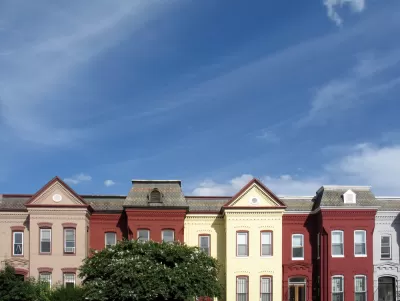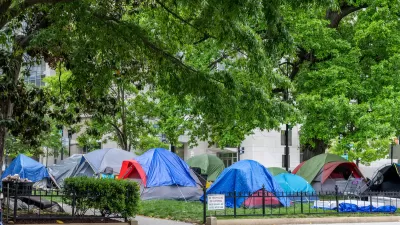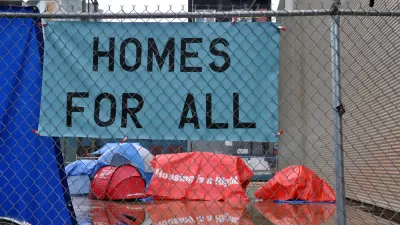Hindered by bureaucratic delays and a tight housing market, voucher recipients in the District have a hard time finding available units.

Ten months after District of Columbia voters approved a tax increase to fund housing and supportive services for the district’s most vulnerable residents, only a fraction of people who received housing vouchers have moved into housing, reports Julie Zauzmer Weil in the Washington Post. “While the city gave out an unprecedented 2,400 permanent vouchers, just 555 people have managed to use them to move into apartments, locked out by a tight housing market and D.C. Housing Authority delays.”
The city has taken steps to speed up the process, such as passing emergency legislation allowing tenants to use vouchers without having to provide identification documents, which many people lose while homeless. “And the city agreed to address another complaint from case managers: that while their clients could pay rent using their housing vouchers, many large apartment buildings charge ‘amenity fees’ that vouchers wouldn’t cover.” The District will now pay move-in or other fees that previously prevented people from securing a lease.
Other kinks that slow down the process remain. For example, the Housing Authority must inspect units before voucher holders can move in, prompting some prospective tenants to lose housing to other renters who can move in—and pay—right away. To speed up this step, “DCHA is looking at inspecting certain units even before a voucher holder identifies the apartment as a place they want to rent.”
FULL STORY: D.C. had a plan to end chronic homelessness. Why isn’t it working yet?

Planetizen Federal Action Tracker
A weekly monitor of how Trump’s orders and actions are impacting planners and planning in America.

San Francisco's School District Spent $105M To Build Affordable Housing for Teachers — And That's Just the Beginning
SFUSD joins a growing list of school districts using their land holdings to address housing affordability challenges faced by their own employees.

The Tiny, Adorable $7,000 Car Turning Japan Onto EVs
The single seat Mibot charges from a regular plug as quickly as an iPad, and is about half the price of an average EV.

Seattle's Plan for Adopting Driverless Cars
Equity, safety, accessibility and affordability are front of mind as the city prepares for robotaxis and other autonomous vehicles.

As Trump Phases Out FEMA, Is It Time to Flee the Floodplains?
With less federal funding available for disaster relief efforts, the need to relocate at-risk communities is more urgent than ever.

With Protected Lanes, 460% More People Commute by Bike
For those needing more ammo, more data proving what we already knew is here.
Urban Design for Planners 1: Software Tools
This six-course series explores essential urban design concepts using open source software and equips planners with the tools they need to participate fully in the urban design process.
Planning for Universal Design
Learn the tools for implementing Universal Design in planning regulations.
Smith Gee Studio
City of Charlotte
City of Camden Redevelopment Agency
City of Astoria
Transportation Research & Education Center (TREC) at Portland State University
US High Speed Rail Association
City of Camden Redevelopment Agency
Municipality of Princeton (NJ)





























